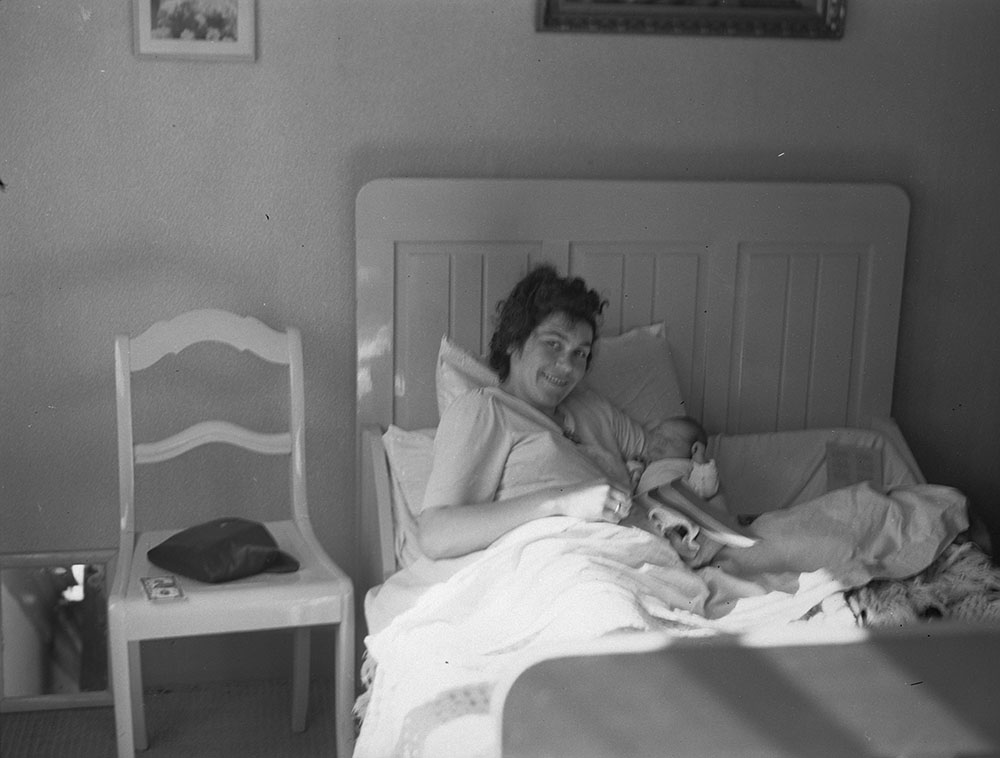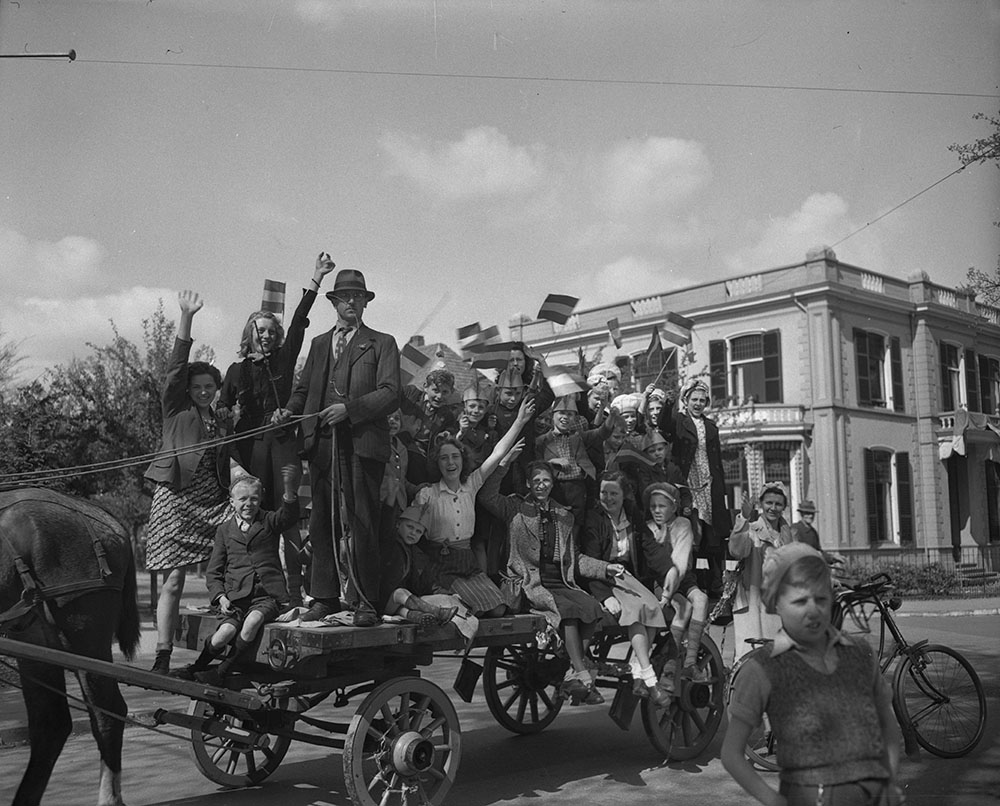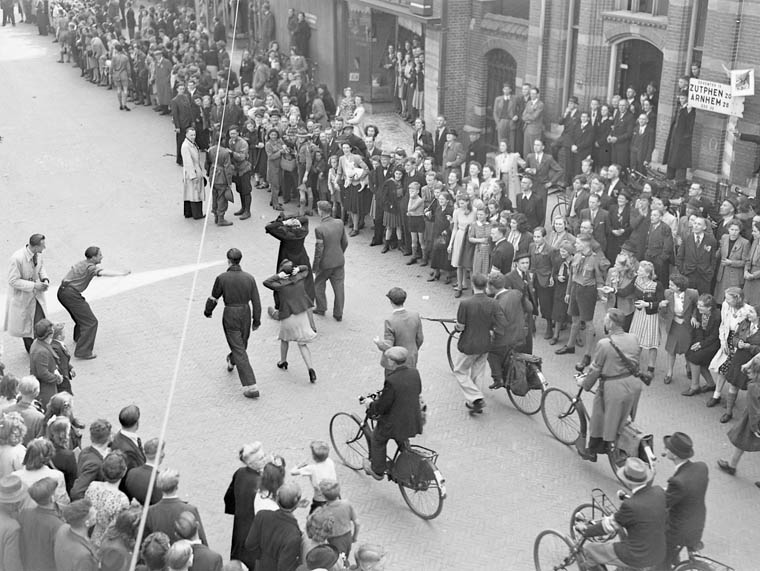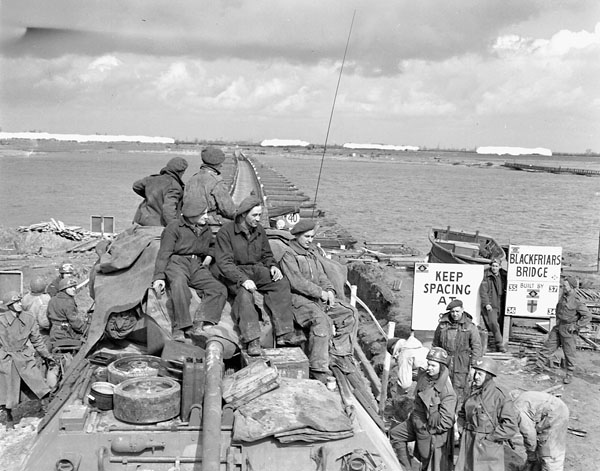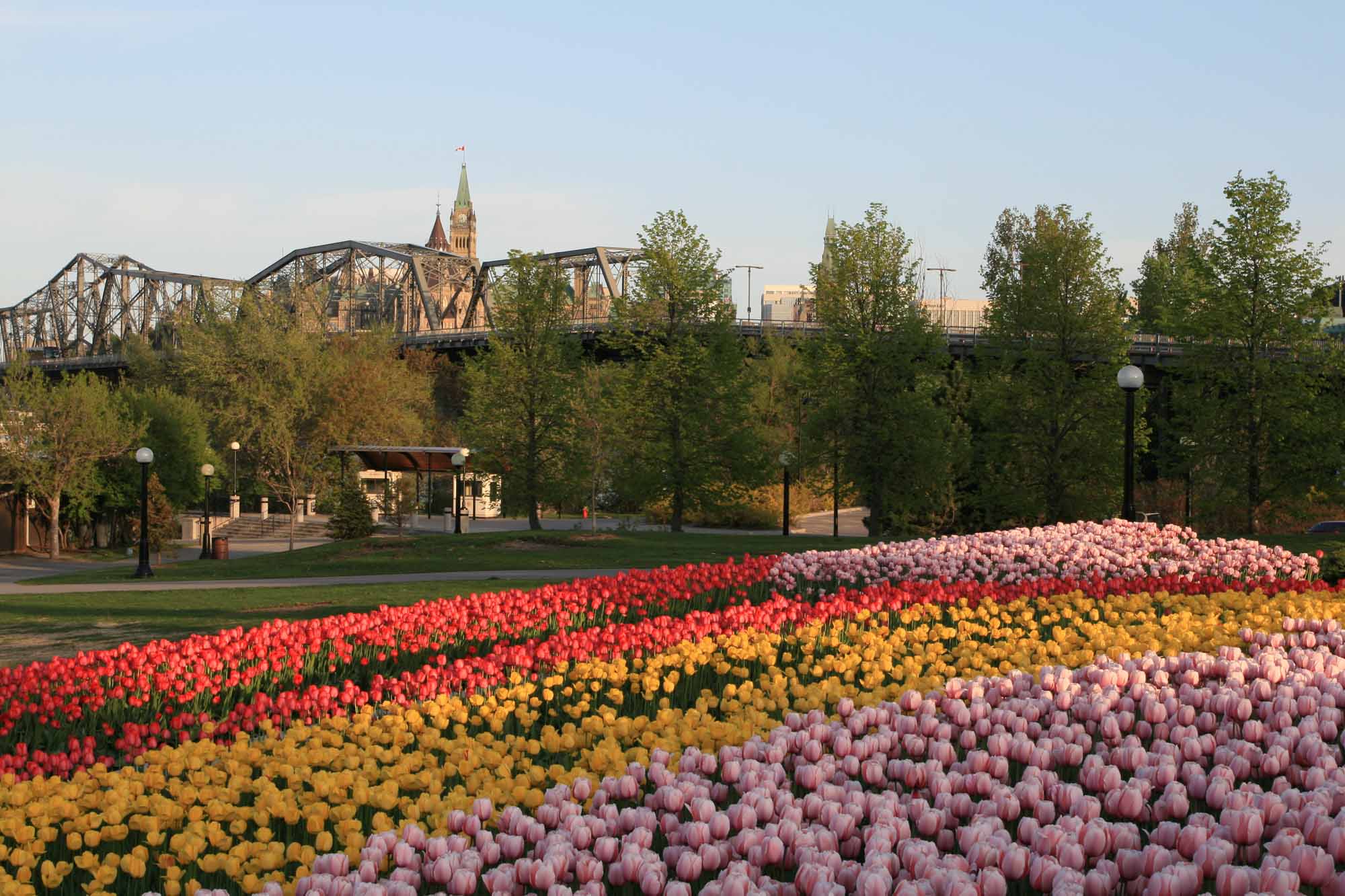Canadian soldiers liberated the city of Apeldoorn in the Netherlands on 17 April 1945, shortly before the Second World War ended in Europe. The Netherlands had been occupied by German forces since 1940 and was not completely liberated by Allied forces until May 1945. The Apeldoorn operation began on 11 April 1945 when 1st Canadian Infantry Division crossed the Ijssel River and advanced towards the city. The German defenders, fearing encirclement, withdrew without significant fighting. The Canadians captured the city with minimal loss of civilian lives or property damage, but suffered 506 casualties during the operation. Nearly 80 years later, the people of Apeldoorn still commemorate the Canadian soldiers who liberated their city. In 2005, Apeldoorn became twinned with the city of Burlington, Ontario.
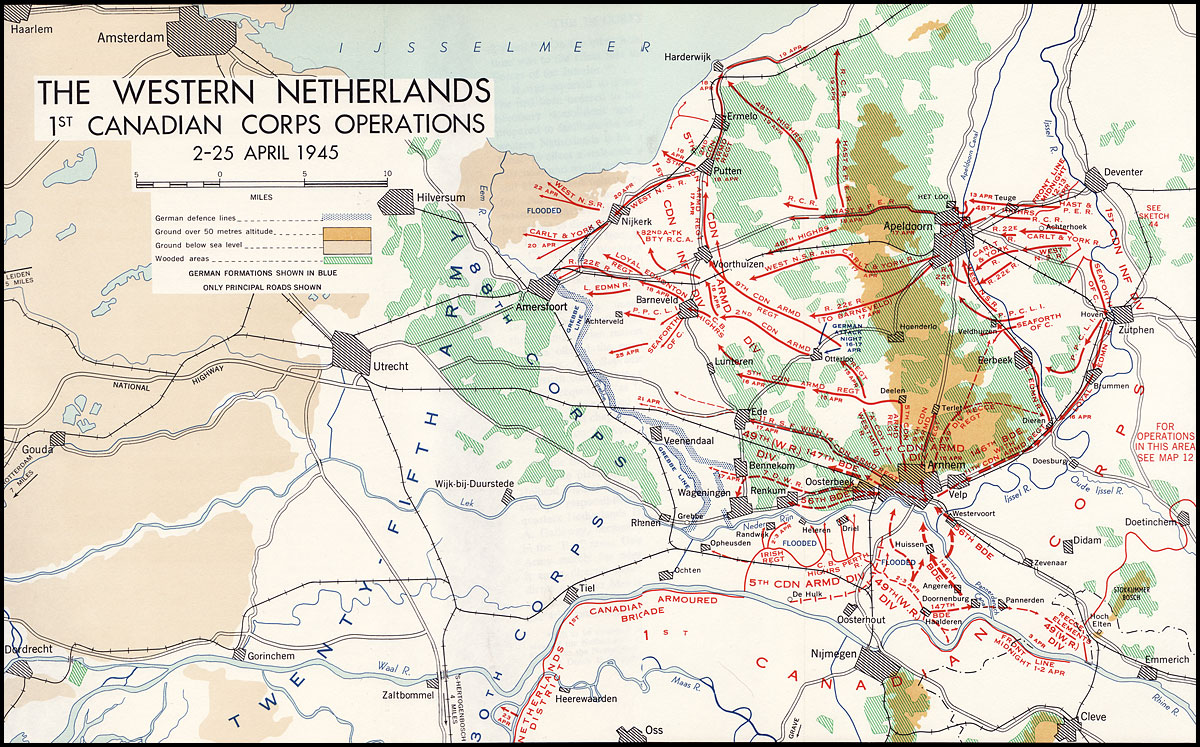
German Occupation of Apeldoorn
Apeldoorn was a city of 72,600 people at the beginning of the war. It had the added cultural significance of being home to the royal family’s Het Loo estate. The city had suffered terribly under the German occupation, particularly through the “Hunger Winter” of 1944–45. So too had other cities in the western Netherlands, such as Amsterdam, Rotterdam and The Hague. By April 1945, some of the country had been liberated but the western Netherlands was still occupied. While other Allied forces pushed into Germany, First Canadian Army was ordered to clear out the remaining German forces in the Netherlands.
Liberation of Western Netherlands
The Allies’ advance to the Rhineland had bypassed much of the Netherlands, including major cities in the western part of the country. In April, First Canadian Army was ordered to liberate the rest of the Netherlands. I Canadian Corps would attack north and west, while II Canadian Corps would attack north and east. The Ijssel River, a tributary of the Rhine that emptied into the North Sea, roughly divided the two corps. II Canadian Corps would clear the east bank of the Ijssel River, and the temporarily attached 1st Canadian Infantry Division would cross the Ijssel and attack westward. I Canadian Corps, with the 5th Canadian Armoured Division, the 1st Canadian Armoured Brigade and the British 49th (West Riding) Division, would then attack northwards from its positions around Nijmegan to capture Arnhem.
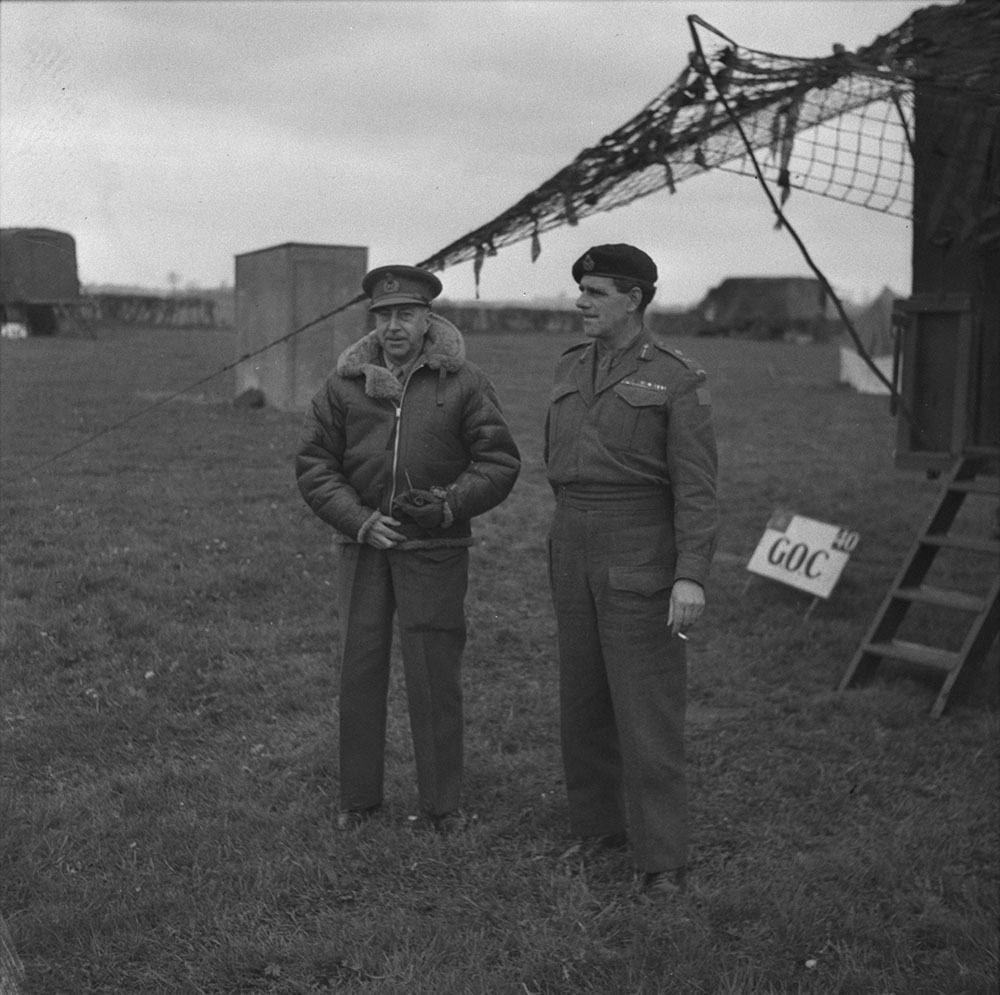
Operation Cannonshot
Major-General Harry Foster commanded 1st Canadian Infantry Division in crossing the Ijssel River and the liberation of Apeldoorn. The operation was codenamed Operation Cannonshot. Foster’s plan was as follows: first, 2nd Canadian Infantry Brigade would cross the river between Deventer in the north and Zutphen in the south. Then, 1st Canadian Infantry Brigade would expand the bridgehead and assume the advance towards Apeldoorn. At the same time, 3rd Canadian Infantry Brigade, crossing the Ijssel further south, would attack towards Apeldoorn from the southeast.
On the late afternoon of 11 April, the two lead battalions from 2nd Canadian Infantry Brigade – the Princess Patricia’s Canadian Light Infantry (PPCLI) and the Seaforth Highlanders of Canada – crossed the Ijssel River in Buffaloes, a tracked amphibious vehicle. Sherman tanks from the 1st Hussars were rafted across the river. The attack surprised the German defenders, and the Canadians faced relatively little opposition. Early the next morning, the PPCLI defended the bridgehead against a German counterattack, and 1st Canadian Infantry Brigade began their crossing.
On 12 April, the commander of 1st Canadian Infantry Brigade, Brigadier James Desmond Blaise “Des” Smith, sent the Royal Canadian Regiment (RCR) and the 48th Highlanders of Canada into the bridgehead first, each supported by a squadron from the 1st Hussars. The RCR’s crossing and breakout were relatively unopposed. Meanwhile, the 48th Highlanders hit resistance. Lieutenant Colonel Donald Mackenzie, commanding officer of the 48th, was killed by shellfire during a personal reconnaissance. His second-in-command, Major James Counsell, took over just as Captain George Beal led A Company in a flanking attack that dislodged the stubborn German position. (Captain Beal received the Military Cross for this attack and a bayonet charge he led two days later.) By the end of 12 April, the 48th reached Twello, a town about halfway between the Ijssel and Apeldoorn, making up for lost time by riding on the attached Shermans from the 1st Hussars. Meanwhile, the RCR moved forward on the 48th’s left flank to widen the advance.
With the successful crossing of the Ijssel, I Canadian Corps began its attack against Arnhem late in the evening of 12 April. The 49th (West Riding) Division soon held Arnhem, and 5th Canadian Armoured Division drove quickly north towards the Ijsselmeer. The German defenders in Apeldoorn found that their lines of communication to the west were about to be severed. Their original plan to block the Allied advance by defending from behind the Apeldoorn Canal was no longer feasible.
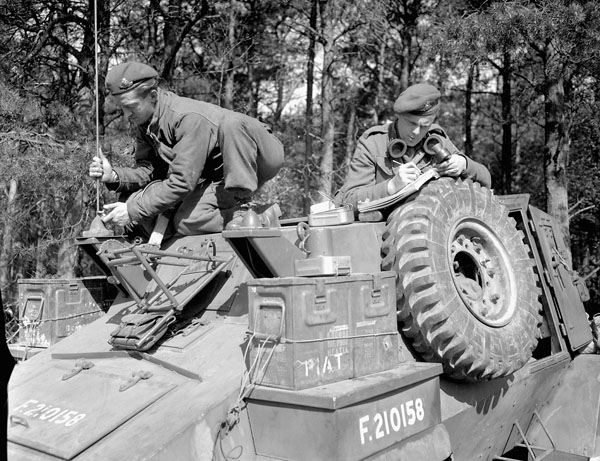
Liberation of Apeldoorn
Major-General Foster hoped to surround Apeldoorn and force a surrender by the German defenders. First Canadian Infantry Brigade advanced towards Apeldoorn, while 3rd Canadian Infantry Brigade attacked south of it, attempting to cross the canal and get behind the city. Second Canadian Infantry Brigade was diverted southwards to link up with the right flank of the British 49th (West Riding) Division.
First Canadian Infantry Brigade reached the city’s outskirts by April 13, but the canal foiled most attempts to enter the city. The 48th Highlanders fought through the suburbs in the south, up to the edge of the canal, and then handed over their positions to the RCR. The brigade commander repositioned the 48th to attack the city from the north. However, during the night of April 16, the RCR exchanged some fire with the German defenders along the canal, after which the Dutch resistance informed the RCR that the Germans were withdrawing. The RCR reacted quickly and sent patrols into the city, capturing German soldiers tasked with destroying the canal locks. Brigadier Smith sent the 48th Highlanders and the Hastings and Prince Edward Regiment into Apeldoorn to secure other key locations. The next day, 1st Canadian Infantry Brigade occupied the city. The West Nova Scotia Regiment, from 3rd Canadian Infantry Brigade, had reached the city's southern edge by that time.
The Canadian soldiers in Apeldoorn encountered joyous crowds of civilians, who greeted them with food, flowers, and Dutch flags they had kept hidden during the occupation. However, there was very little pause in Apeldoorn. First and 3rd Canadian Infantry Brigades were immediately sent north and west to pursue the retreating Germans. Most would return to billets in and around Apeldoorn a few weeks later. The Netherlands was liberated on May 5 (Liberation Day), and Germany surrendered on May 8 (Victory in Europe Day, or V-E Day).
Memory
The liberation of Apeldoorn came at the cost of 506 Canadian casualties between April 11 and 17. The dead are buried at the Holten Canadian War Cemetery. The liberation of Apeldoorn and the rest of the Netherlands led to a lasting relationship between Canadians and the Dutch. Every Christmas Eve, Dutch schoolchildren place candles on the graves of soldiers in the Holten cemetery in memory of their Canadian liberators.

 Share on Facebook
Share on Facebook Share on X
Share on X Share by Email
Share by Email Share on Google Classroom
Share on Google Classroom
